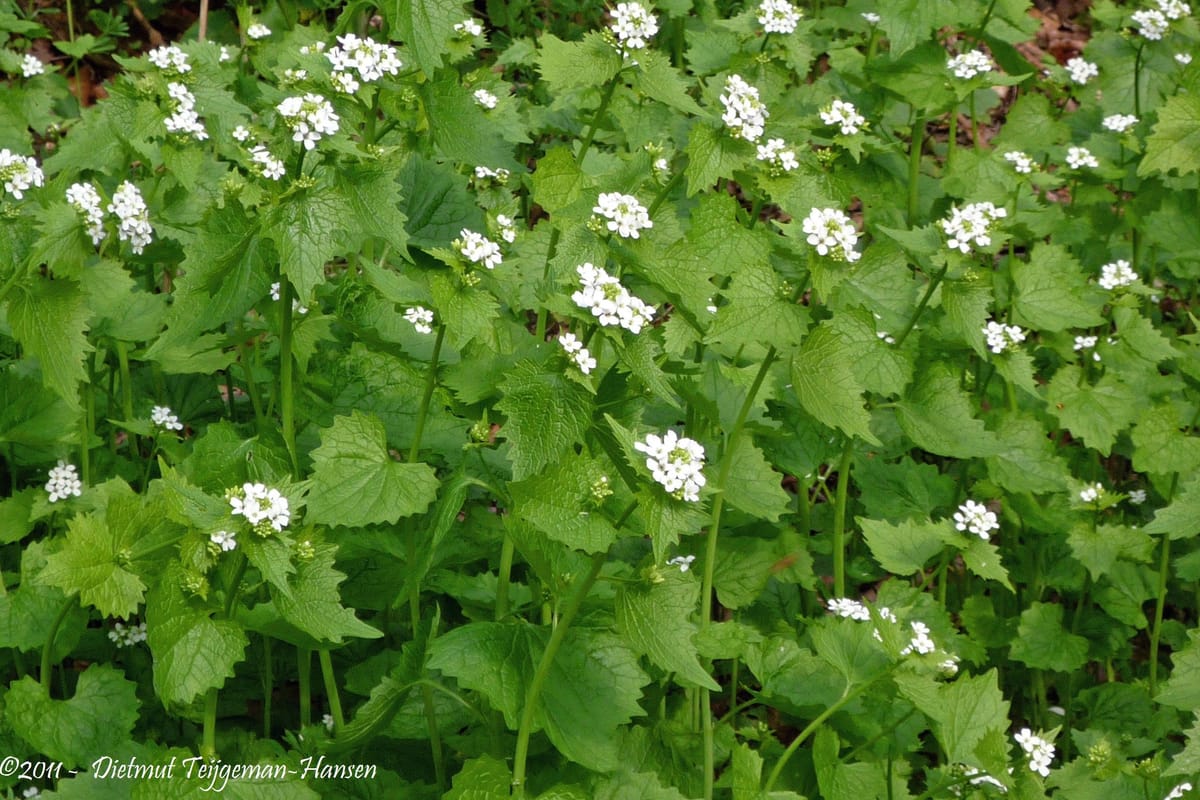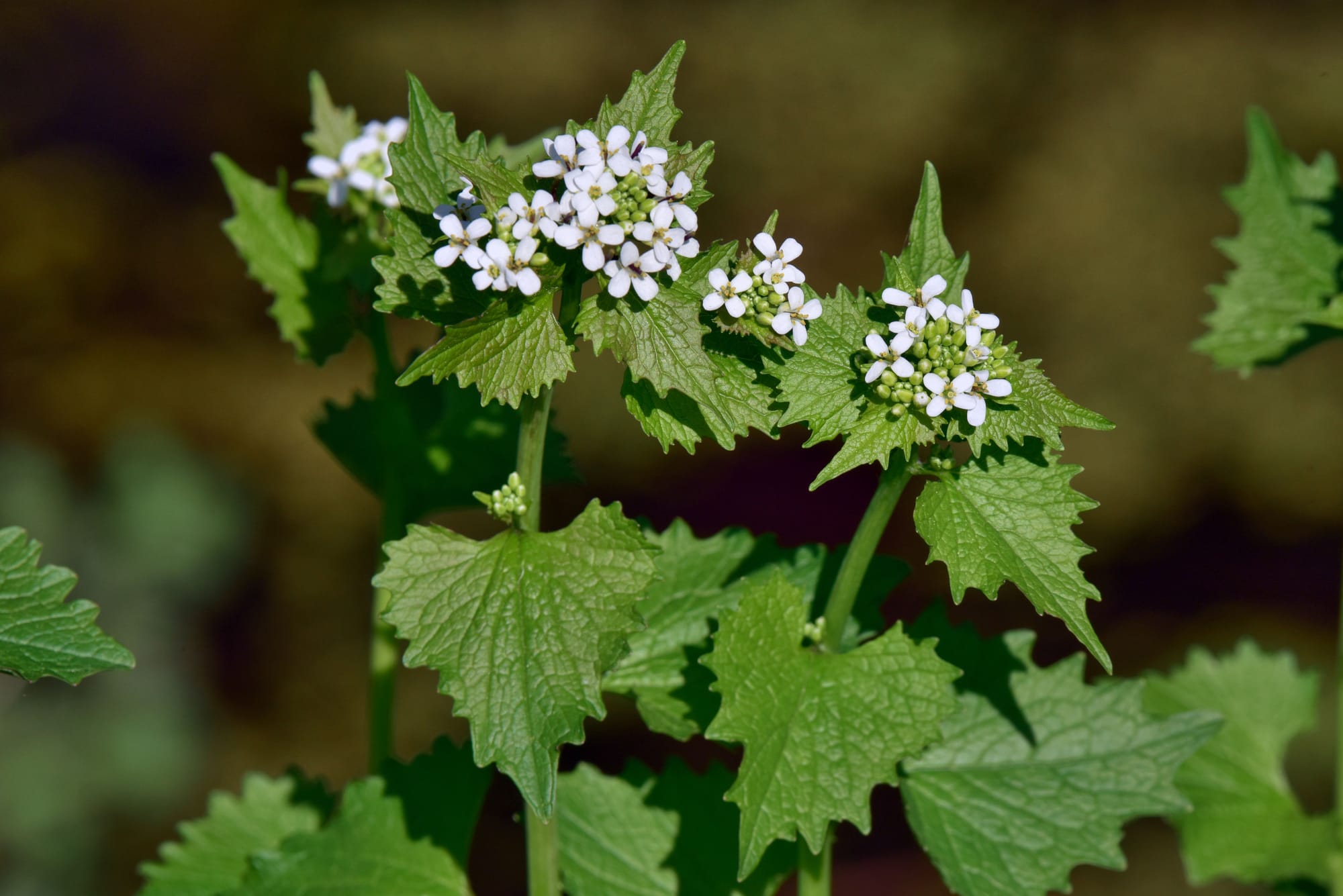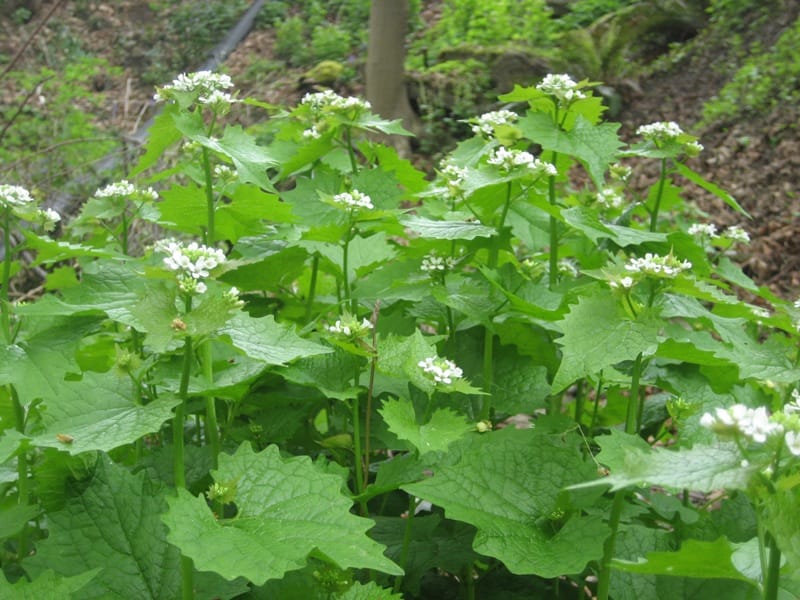Sound the emergency sirens! It's Garlic Mustard Season!

Hey all! Changing up the format a little bit this week because it's the perfect time to harvest a plant that is both a) tasty and b) an invasive colonizing a--hole.
Garlic Mustard is a highly invasive species, and because it comes up so early in the season, it crowds out native plants and damages the ecosystem. Luckily, it's delicious! So it's a problem that's easily solved. It's the rare wild food that is impossible to over-harvest, because if we manage to eradicate it in our area, WE WIN.
First, let's go over some basic foraging guidelines:
- If it tastes bad, spit it out. Either you've got the wrong plant, or you've got the right plant and it turns out you don’t like that plant. Either way, don't eat it. Unpleasant tastes are how your body tells you not to eat something, and you want to have a LOT more information before you override that decision from your body.
- Don't eat things growing near busy roadways. Car exhaust poisons everything it touches. Eating things along the bike path is usually ok, but make sure there's no dog poop nearby.
- Always leave the land better than you found it. Pick up any litter you run across. Don’t damage anything needlessly. We are guests here, be a good one.
What to bring with you when you’re harvesting Garlic Mustard:
- Gloves, to protect your hands and let you get a good grip on the taproot
- Good boots if you’ve got them. The factory surplus clothing store up on Old 31 is a good place to get some if you don’t already have a pair.
- A basket for the food harvest, sized appropriately to make sure you don’t end up with more garlic mustard than you can handle. A gallon or two is probably plenty for your first time out.
- A bucket, bin, or tarp for the compost harvest. One or two of you are probably already typing up a reply telling me not to compost garlic mustard, but I promise I will be covering that.
- If you’re old like me, or you’ve been hit by cars a bunch of times like me, you might want a kneeler, cane, and/or other mobility aids to help you get off the ground. If young whippersnappers try to make fun of you for that, taunt them with reminders of their own inevitable mortality and don’t give them any pesto.
- A first aid kit, because sh*t happens in the woods, and infections are no joke. Cheap, portable, effective antiseptics and antibiotics are one of the underappreciated miracles of our society, and some of the many things our ancestors would have treasured more than gold. If you don’t have a first aid kit, you can pick one up for free at the Montague Commoners shed at the Artisan Market on Saturdays in Montague.
How to ID Garlic Mustard





- It’s got clusters of white flowers at the ends of stems. The flowers follow the patterns of the mustard family, with four petals and six stamens, four long and two short.
- The leaves towards the top of the plant are pointy, while the leaves further down the stem are rounded. We’ll use this later on to determine which parts of the plant we want to eat and which we want to use as biomass instead.
- It’s the one that looks like Garlic Mustard. I know, not very helpful. But once you get your eye keyed in to looking for it, you’ll find that it’s pretty distinctive looking. It doesn’t have any particularly close look-alikes, and nothing in the mustard family is toxic.
- If you come to the Artisan Market on Saturday, I can show you the patch growing nearby. Personally, I always have an easier time learning to identify a new plant when I'm introduced to it in person by someone who knows it well.
The harvesting process:
- Reach as far down on the taproot as you can, grip it firmly, and pull it as smoothly as possible until the root system gives way. Shake any soil attached to the roots back onto the ground. If the root snaps, you pulled too hard too quickly. Not the end of the world, but try to be gentler with the next plant. Getting the roots up is key to stopping it from growing back.
- Find the point on the stem where the tender, fresh growth, which usually has pointier leaves, gives way to the tougher, more bitter rounded leaves further down. Snap the stem at that point, put the fresh growth in the food basket, and put the rest of the stem and roots into the compost bucket.
- Now, conventional wisdom will tell you that you can’t compost garlic mustard because very few compost systems get hot enough to kill garlic mustard seeds. This is very true. But we just put the flowering end of the plant into our food basket. The basal leaves and the roots can’t set seed on their own. You can be extra sure they’re dead by leaving them on some hot asphalt or other hot dry surface in the sun until they dry completely, or by running them through a food processor and turning them into green slurry. Whatever you do, don't put Garlic Mustard into your compost pile with flowers or buds still intact, or your compost pile will turn into a patch of garlic mustard next spring.
- When you’ve filled up your food basket or (here’s hoping someday) run out of Garlic Mustard to harvest, thank the land for the food it’s given you and pack everything up to head home.
Processing your harvest
- The fresh growth we focused on collecting can be eaten raw, either on its own or in salads and sandwiches. It’s got a nice crunch and a relatively mild flavor.
- It also makes great pesto! Here are some recipes to get you started. You can freeze extra pesto in an ice cube tray for easy meals in the future.
- If you’ve got access to an oven and some cookie sheets, you can also dehydrate your garlic mustard to use throughout the rest of the year. Just place the garlic mustard in a thin, even layer on the cookies sheets, stick them in the oven on the lowest possible heat setting, and check on them ever hour or two until they’re dry enough to crumble/crush and put into a jar. Make sure that you label the jar! Nobody likes playing "guess that plant" when it's been sitting in the cupboard for a year.
Where to find it locally
- Montague Township Park
- Behind the Artisan Market in Montague
- Along the bike path in Whitehall between Howmet Plant 3 and the White Lake Community Library
- Dozens, if not hundreds of other places around town. Go for a walk around the edges of woods near your house and I bet you'll find a patch or two I don't know about yet.
Join us to harvest together
We'll be harvesting Garlic Mustard this week at the Artisan Market. Join us for a hands-on lesson in harvesting it and processing it for dehydration. You'll be able to take home as much as you want, and you'll also be able to earn hours that you can redeem for all the cool stuff we sell at the market.
Thanks for making it to the end of the newsletter! No manicure pics this week, because I spent the day doing biochar stuff outside again instead of doing my nails. It's gotten to the point where the polish is visibly chipped 😯 Hopefully the world will survive, and I'll try to get some fresh polish on before Dance For Democracy on Friday. Have a good week, and I hope to see you around town.
